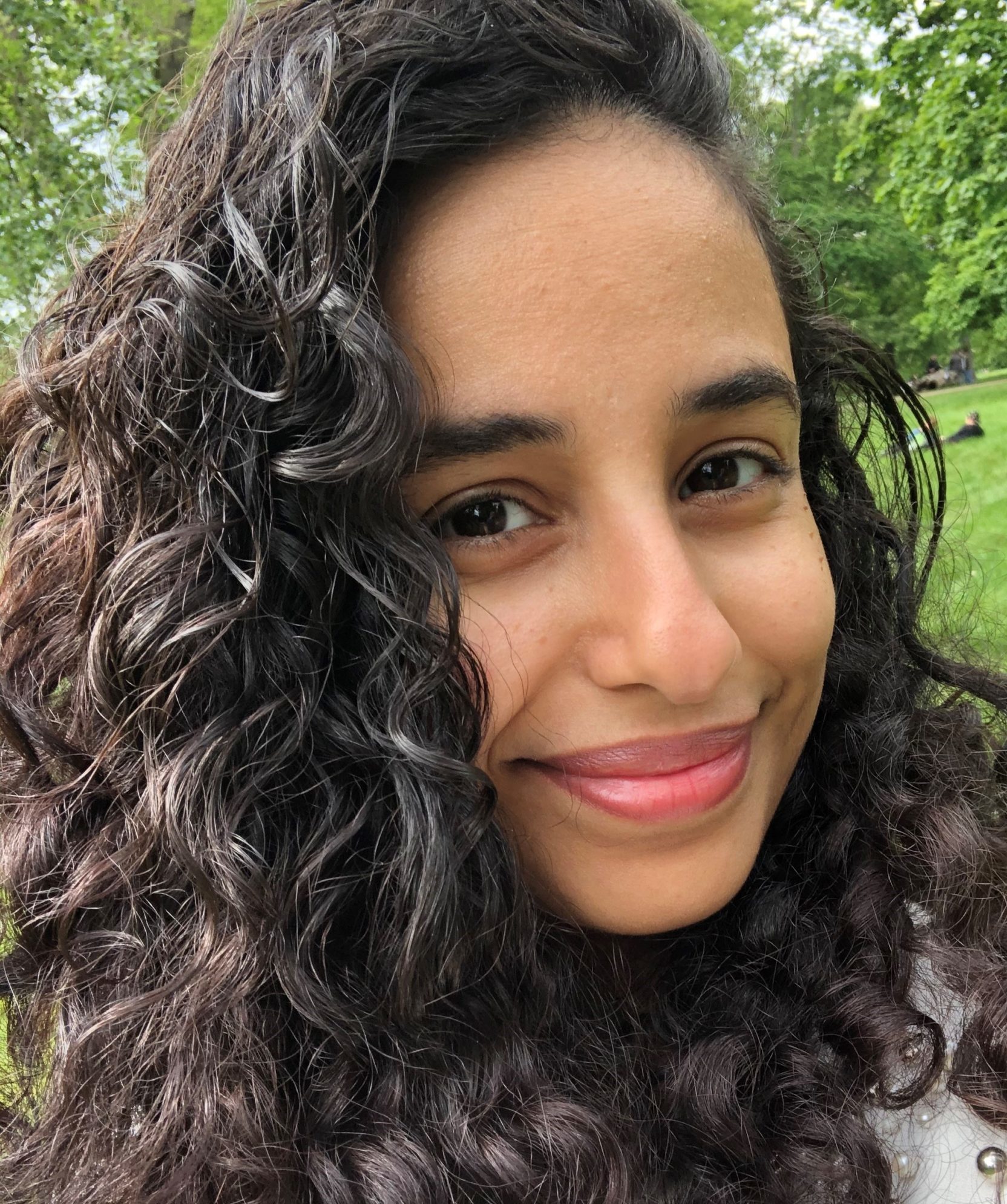Census Shifts by OMG Unite – Part 3
Ethnicity/Religion/ National Identity
The Census takes place every 10 years and generates a snap-shot of the UK population. The first phase of the 2021 Census was released in the summer of 2022, compiling the most detailed data on the make-up of the UK since 2011.
Knowing the shifts in our population; who they are, where they are and their wellbeing, is vital to shaping an effective and inclusive brand strategy. While the full Census data set won’t be released until mid-2023, a staggered release of individual sets of data has been running from Autumn 2022.
To keep you informed, OMG UNITE have created ‘Census Shifts’, a content series exploring the trends and changes seen over the last three decades in our population (comparing 2001 – 2011 Census data with 2011 – 2021), with a cultural twist.
Following on from our initial two ‘Census Shifts’ (focused on Population & Household Estimates and International Migration), we are pleased to share the third set of insights in the series. Building on the
International Migration data shared in Shift 2, we look to highlight key findings in Ethnicity & Religion and their implications. We also share our thoughts on what these findings mean to our industry and what we can do now to drive inclusivity in comms.
Please note that the language, terminology and segmentation used throughout this blog post is consistent with that of the Census.
With high growth ethnic minority communities representing more than 1 in 4 people, it’s time to reconsider bespoke comms to drive engagement
What’s new
Ethnic minority groups (combined) have increased significantly (+39%) between 2011 to 2021. Together they now account for 26% (1 in 4) of the population in England and Wales.
Only 74% of usual residents in England and Wales identified their ethnicity as White: English, Welsh, Scottish, Northern Irish or British. A decrease in both number (-780k) and percentage (down from 80% in 2011).
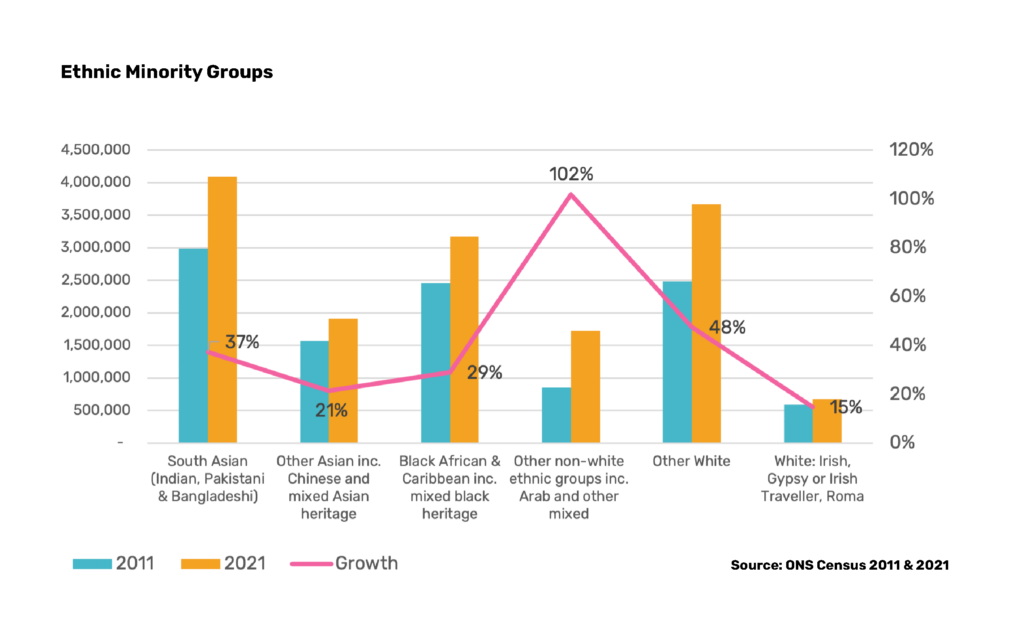
The wider Asian community (including South Asian, Other Asian groups and people with mixed Asian heritage) saw the largest increase, up from 4.6 million people in 2011 to 6 million (10% of the overall
population) in 2021.
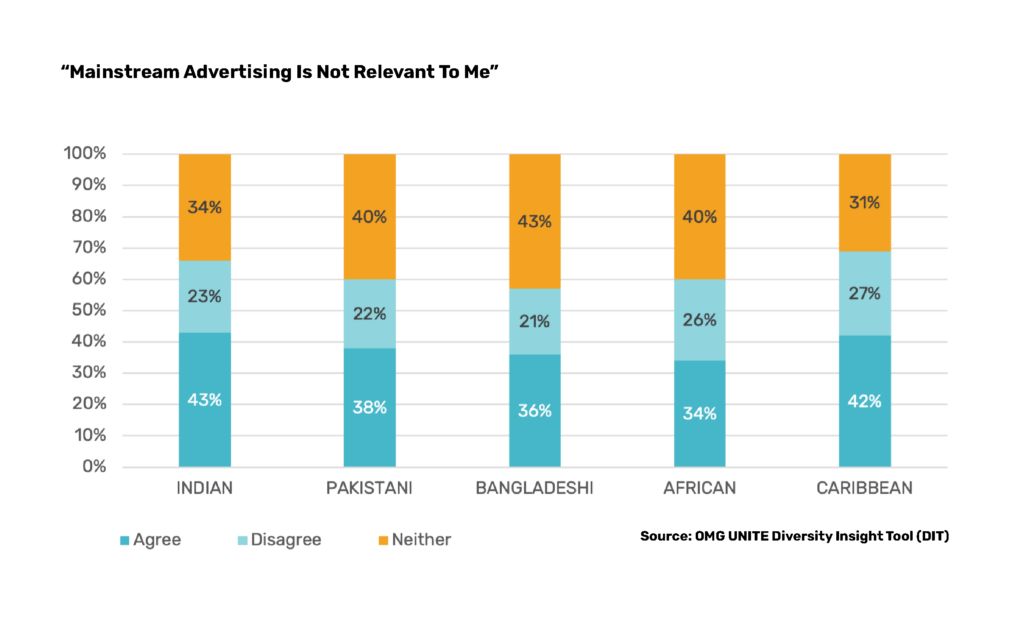
What it means to our industry
The individual ethnic minority groups have all grown significantly in the last 10 years and represent key audiences that brands should not ignore. OMG UNITE’s Diversity Insight Tool (DIT) shows that despite their significant sizes, multicultural communities still feel mainstream advertising is not relevant to them, creating an opportunity to be more representative and relevant to drive growth.
Several groups within the ethic minority community share similarities that allow us to meaningfully reach them together through media.
What we can do now
Use OMG UNITE’s Diversity Audit to understand the gaps and opportunities for different groups. Start to think about a more tailored approach for communities that are most relevant and sizable for your business. By considering creative representation and relevant media environments, there are opportunities that brands can tap into to improve how they connect with diverse communities.
In an increasingly secular world, cultural moments are key opportunities to connect with diverse communities
What’s new
For the first time in a census of England and Wales, less than half of the population (46.2%: 27.5 million people) described themselves as Christian. This coincided with an increase in the number of people reporting ‘No religion’ from 25.2% of the population in 2011 to 37.2% in 2021.
While there are more people who identified as not religious, religions observed by ethnic minority groups continued to see strong growth. There was a 42% increase for Muslim (now 3.9m people) and a 26% increase (now 1m people) for Hindu.
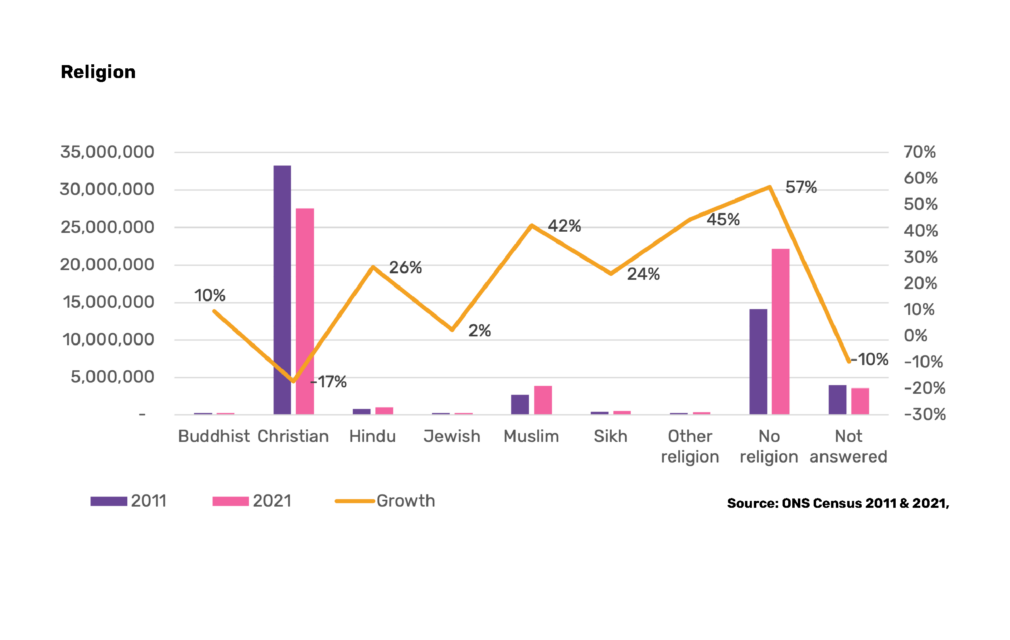
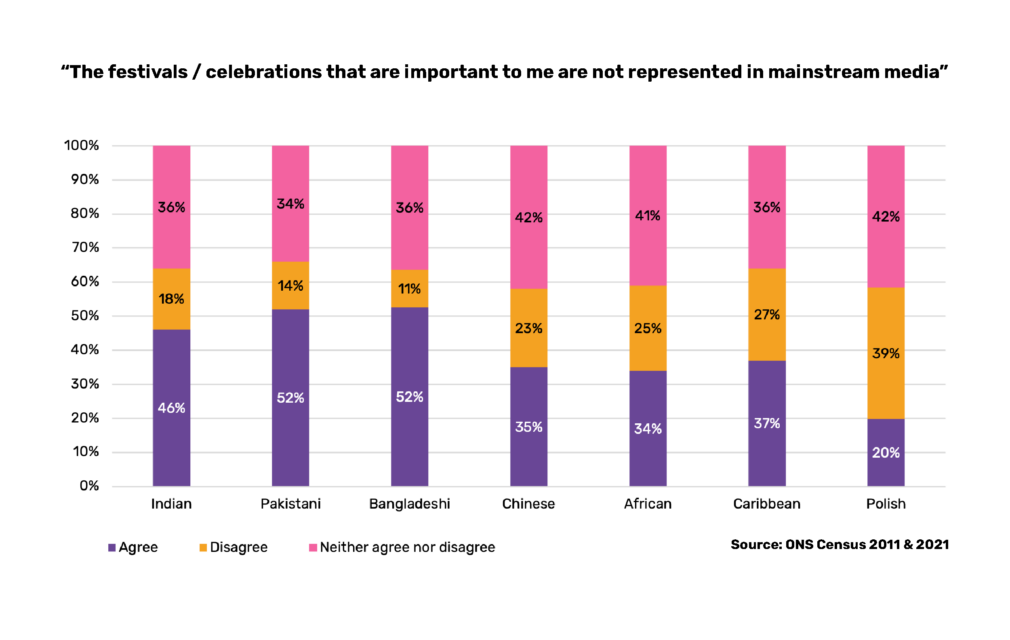
What it means to our industry
Religions like Islam and Hinduism are now observed and their traditions celebrated by more people than ever in England and Wales. In London, Muslim accounted for 15.0% of the population and Hindu accounted for 5.1%. When 1 in 7 people that walk on the streets of London are Muslim, it’s also time for brands to think about how they can tap into this huge opportunity.
Cultural and religious moments are becoming bigger opportunities and making their way onto marketing calendars of leading brands. They’re celebrated by many, whether it’s for religious or non-religious reasons. However, OMG UNITE’s Diversity Insight Tool shows that majority of diverse audiences don’t feel that their own celebrations are represented in mainstream media.
What we can do now
Understand what these cultural and religious opportunities would mean for your brands. Apart from Ramadan, Eid and Diwali, there are actually hundreds of events celebrated by different communities. The same way Christmas is the biggest moment with Christian families, each religion also has its own tentpole moments that represent great opportunities from a product perspective. However, these are also the best moments to demonstrate understanding and connect with audiences culturally if done
authentically.
Only 1 in 10 people specify a non-UK identity, but identities can be multi-layered and representation is key
What’s new
Those selecting a non-UK identity only accounted for 9.7% of the overall population (5.8 million
people) – a marginal increase from 8.0% of the population (4.5 million people) in 2011.
Another 2.0% (1.2 million people) selected both UK identify and non-UK identify – an increase from
0.9% (492k ) in 2011.
Among those who selected a non-UK national identity, the most common response were those
describing Polish (1.0%, 593,000) and Romanian (0.8%, 477,000) as their identity. Other common
non-UK identities include Indian (0.6%, 380,000), Irish (0.5%, 300,000), and Italian (0.5%, 287,000).
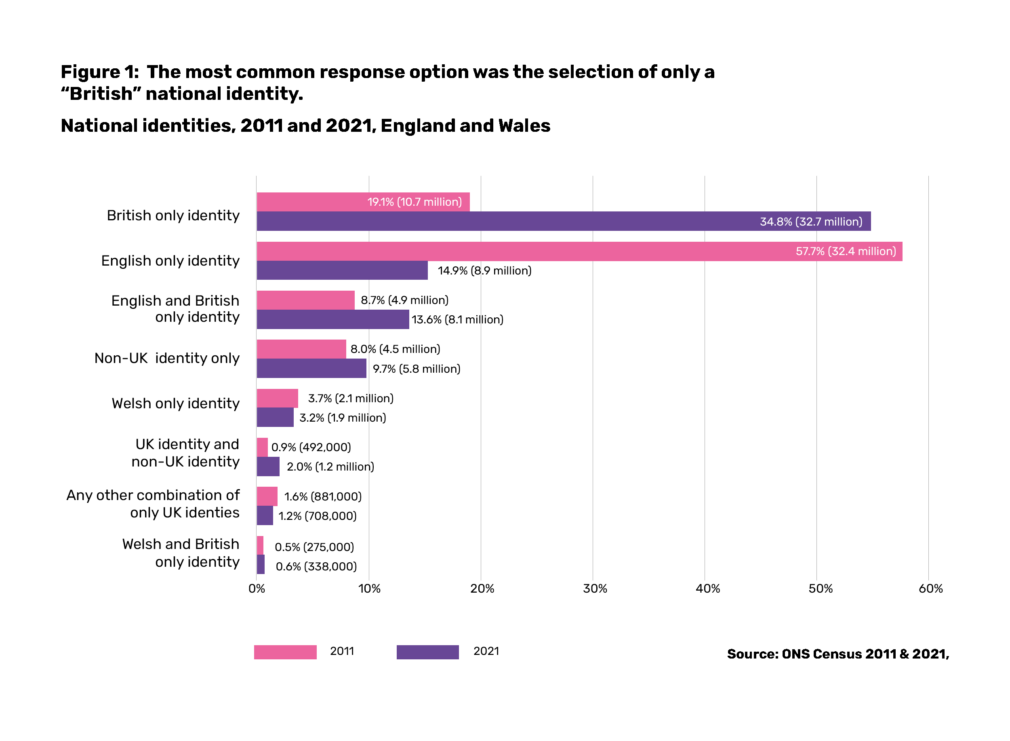
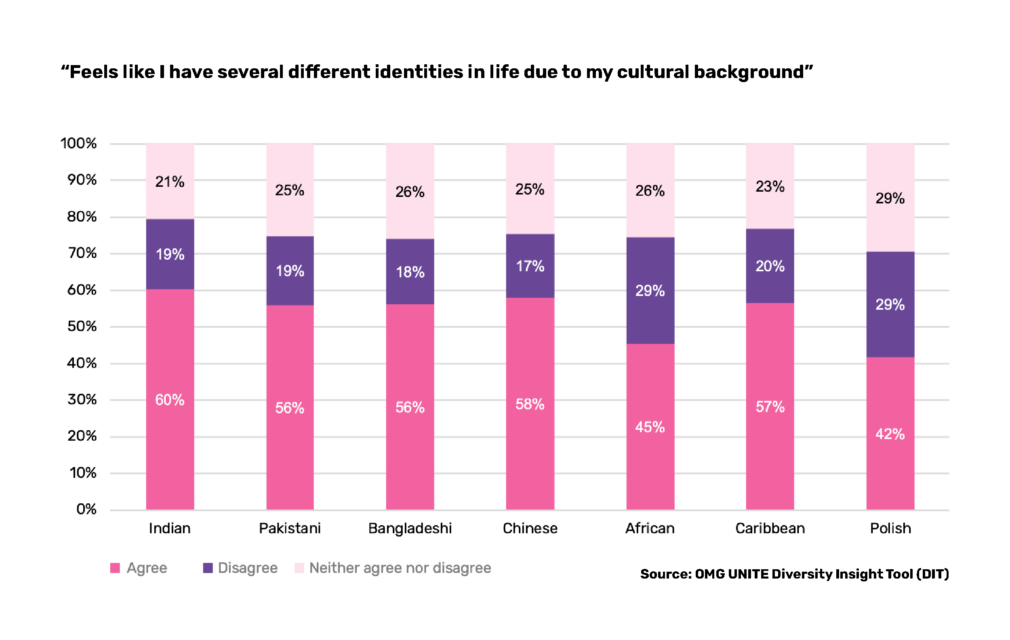
What it means to our industry
We need to recognise that people have different identities: be it national identity, religious identity, LGBTQ+ identity, etc. and these identities, as proven through OMG UNITE’s Diversity Insight Tool, are multi-faceted and people may consciously or unconsciously code-switch depending on who they are with
and where they are. These are often strong influencing factors on how we live our lives, who we follow and look up to, and the media we consume. There are many trusted creators and media channels that can be considered in our media mix – there is an established media landscape for Asian, African, Caribbean, Jewish, Polish, LGBTQ+ creators and media platforms that can allow us to better connect with these communities authentically.
What we can do now
Consider how we can use trusted voices and partners to connect with our audiences. Make sure specialists, such as OMG UNITE, with fully diverse and inclusive teams, are central to these projects. Even for larger national campaigns, being able to diversify the media mix or include different voices/influencers into the plan would be a good starting point in order to extend reach and drive engagement.
Summary
With high-growth ethnic minority communities now representing over 25% of the population in England and Wales, brands should consider a more tailored approach to their comms to drive reach and engagement.
Despite an increasingly secular population, both cultural and religious moments provide
key opportunities to connect with diverse communities.
We need to recognise that identities can be multi-layered and representation is key. Dedicated creatives and trusted media environments can provide nuanced comms with stronger engagement.
Source: https://www.ons.gov.uk/peoplepopulationandcommunity/culturalidentity
